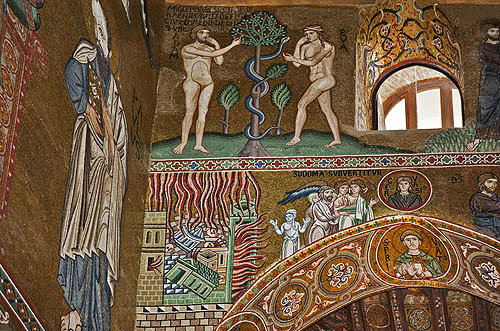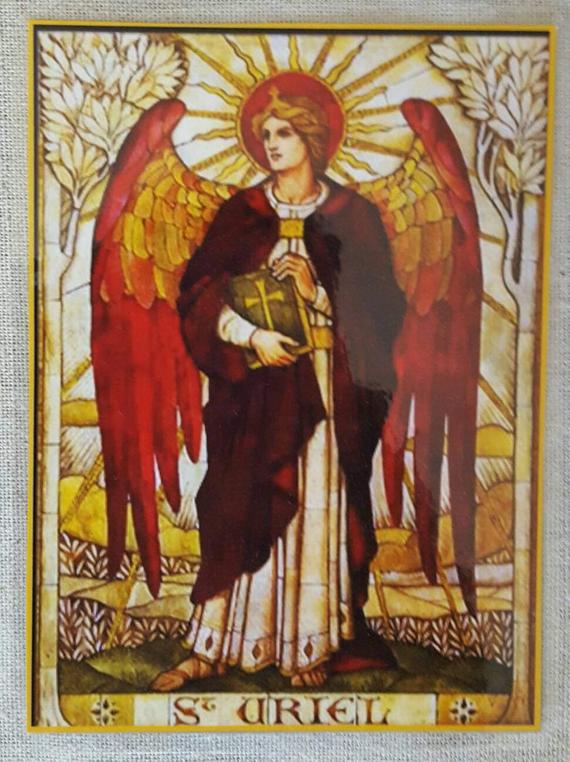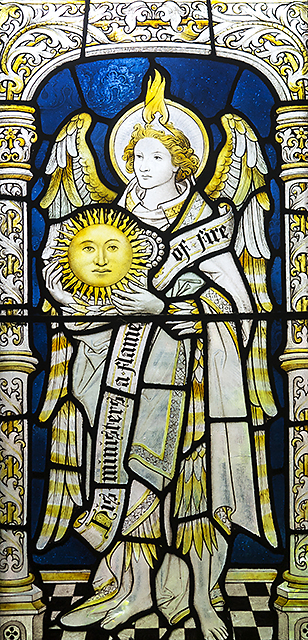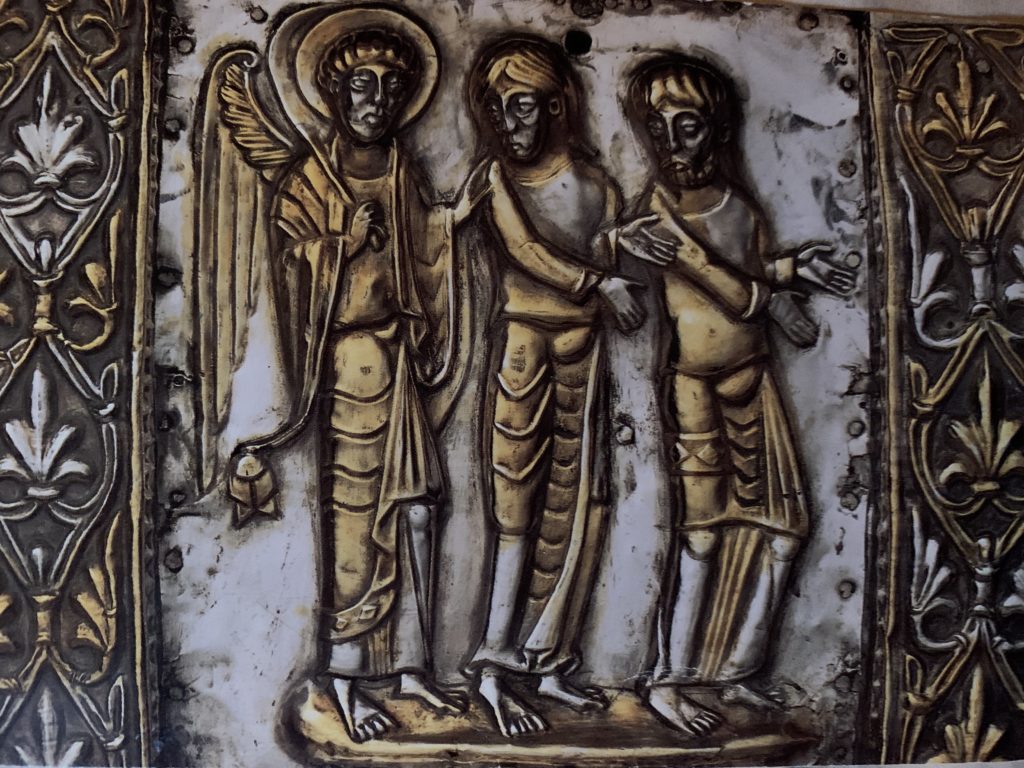
It is written, “The first Adam was made into a living creature;” the last Adam is made into a life-giving spirit. But it is not the spiritual Adam that is first, but the natural; the second Adam is the spiritual. The first Adam is made of the dust of the earth; the second Adam is from heaven. (1 Cor. 15:45-46)
St. Paul refers to Genesis 2:7 (“Adam became a living creature”) to make his point that Christ, who is the Second Adam–the Ultimate Adam–is the model for human existence. The first Adam received life; the second Adam gives life. The first Adam (in Genesis) is made from the dust of the earth; the second Adam comes down to earth from heaven in order to raise the first Adam to heaven.
The first man was made from the slime of the earth. The second man came from heaven. By using the word MAN, he taught the birth of this person from the Virgin …. [was both human and] from the Holy Spirit who came upon the Virgin. Thus, precisely while he was human he was also from heaven.
St. Hilary of Poitiers, On the Holy Trinity, chapter 10.
Just as Christ was “the Second Adam,” his Mother is frequently referred to as “the Second Eve.” Justin Martyr wrote in AD 150
He became man by the Virgin, in order that the disobedience which proceeded from the serpent might receive its destruction in the same manner in which it derived its origin. For Eve, who was a virgin and undefiled, having conceived the word of the serpent, brought forth disobedience and death. But the Virgin Mary received faith and joy, when the angel Gabriel announced the good tidings to her that the Spirit of the Lord would come upon her, and the power of the Highest would overshadow her: wherefore also the Holy Thing begotten of her is the Son of God; and she replied, ‘Be it unto me according to thy word.” And by her has He been born, to whom we have proved so many scriptures refer, and by whom God destroys both the serpent and those angels and men who are like him; but works deliverance from death to those who repent of their wickedness and believe upon Him.
St. Justin Martyr, Dialogue with Trypho, chapter 100
It was also St. Irenaeus of Lyons who wrote in AD 182
In accordance with this design, Mary the Virgin is found obedient, saying: “Behold the handmaid of the Lord; be it unto me according to your word.” (Luke 1:38) But Eve was disobedient, for she did not obey when as yet she was a virgin. … having become disobedient, was made the cause of death, both to herself and to the entire human race; so also did Mary, having a man betrothed [to her], and being nevertheless a virgin, by yielding obedience, become the cause of salvation, both to herself and the whole human race.
And on this account does the law term a woman betrothed to a man, the wife of him who had betrothed her, although she was as yet a virgin; thus indicating the back-reference from Mary to Eve … For the Lord, having been born “the First-begotten of the dead,” (Revelation 1:5) and receiving into His bosom the ancient fathers, has regenerated them into the life of God, He having been made Himself the beginning of those that live, as Adam became the beginning of those who die. (1 Cor. 15:20-22)
Wherefore also Luke, commencing the genealogy with the Lord, carried it back to Adam, indicating that it was He who regenerated them into the Gospel of life, and not they Him. So it was that the knot of Eve’s disobedience was loosed by the obedience of Mary. For what the virgin Eve had bound fast through unbelief, this did the virgin Mary set free through faith.
St. Irenaeus of Lyons, Against Heresies, Book 3, chapter 22
Just as Adam and Eve were both necessary for the creation of the world, so Christ and his Most Pure Mother were both necessary for the salvation of the world. Just as we share in the dust of the first Adam, we now share the spirit and resurrection of the Second–Ultimate!–Adam who was able to be born because the Second–Ultimate!–Virgin made the right choice when given the opportunity to love or reject God.



